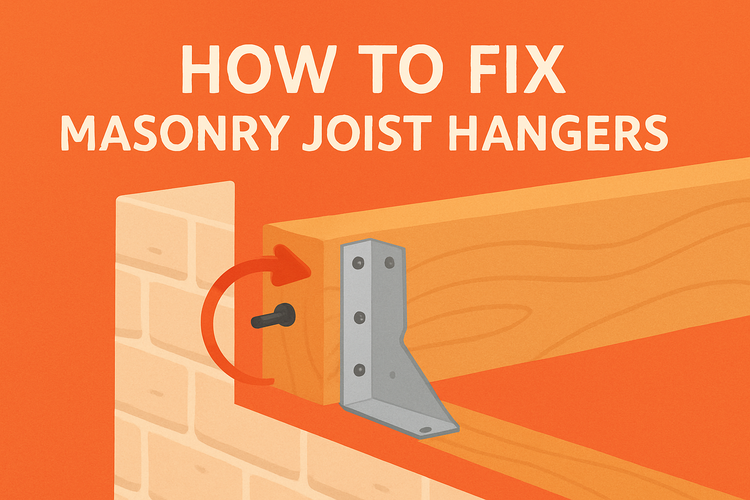How To Fix Masonry Joist Hangers

Understanding Masonry Joist Hangers and Common Issues
Masonry joist hangers are designed to support structural joists when connecting wood to concrete or block walls. Over time or under extreme stress, these hangers can fail or loosen, compromising the structural integrity of a floor or roof.
Common problems with masonry joist hangers include corrosion, improper installation, or voids in mortar or concrete substrates that reduce their load-bearing capacity. Identifying the exact failure point is critical for applying the appropriate repair technique. Rusted metal components may need full replacement, while installation flaws might be corrected by supplemental fasteners or reinforcements.
Inspecting the Damage and Planning the Repair
Before beginning any repair, a thorough inspection is essential. Look for sagging joists, rusted fasteners, or cracking in the surrounding masonry that might indicate structural stress. Pay attention to areas near high moisture exposure.
Use a flashlight and a probe to check how firmly the joist hanger connects to the masonry. If the hanger wiggles or shows signs of pulling away, it's likely compromised. Also, check for signs of wood rot in the joist itself, which might be mistaken for hanger failure. Once you assess the condition, determine if you need a full replacement or if partial reinforcement with new fasteners or epoxy anchors is sufficient.
Create a plan: gather tools such as masonry drill bits, lag anchors, replacement hangers, and protective equipment. You might also need concrete patching compound, depending on the damage. Planning ahead minimizes the time the joist is unsupported during the fix.
Removing the Damaged Joist Hanger
Start by temporarily supporting the joist using a jack or adjustable post to relieve pressure on the hanger. This safety measure prevents further collapse and protects you during the repair process. Never attempt to remove a fastener without relieving the load first.
Remove any screws or nails anchoring the hanger to the joist and the masonry. Use a pry bar or hammer to gently work the hanger free—avoid applying excessive force that might damage the wall or joist. If the hanger is rusted in place, apply a rust-penetrating solution and allow it to sit before trying again.
Once the hanger is removed, clean the area thoroughly. Remove old mortar, loose debris, or any deteriorated fasteners embedded in the wall. Consider lightly sanding wood joists to remove any rust or corrosion stains and prep for hardware fitting.
Installing the New Joist Hanger
Select a galvanized or stainless steel hanger rated for masonry applications. These resist corrosion and ensure a long-lasting bond between wood and concrete. Make sure the size and shape match the old hanger specs to maintain structural alignment.
Drill pilot holes into the masonry using a hammer drill with a carbide bit, following the manufacturer's advice for edge distances and hole depth. Then, install the new hanger by anchoring it into place using masonry screws, sleeve anchors, or epoxy-set threaded rods. Ensure the hanger is level and aligned before fully tightening the fasteners.
Reattach the supported joist using rated joist nails or screws. If the joist end had previous rot or deformation, trim and treat it before reinstalling. Double-check that the joist is level and making full contact with the hanger seat to avoid stress points.
Preventing Future Joist Hanger Failures
Proper maintenance can extend the life of your joist hangers and prevent future failures. Periodically check high-moisture areas for signs of rust, especially in basements or outdoor structures like decks.
Apply rust-resistant coatings to exposed hardware if applicable, and ensure that drainage systems are functioning properly to limit water exposure to walls and joist areas. Seal any cracks in your masonry to prevent water from entering and causing freeze-thaw damage around anchors.
During renovations or inspections, avoid cutting or notching joists near hanger points, as this can weaken the system. Use only fasteners approved for the specific hanger and wall type. By understanding the causes of failure and maintaining the hardware, you increase the longevity and safety of the entire structure.
